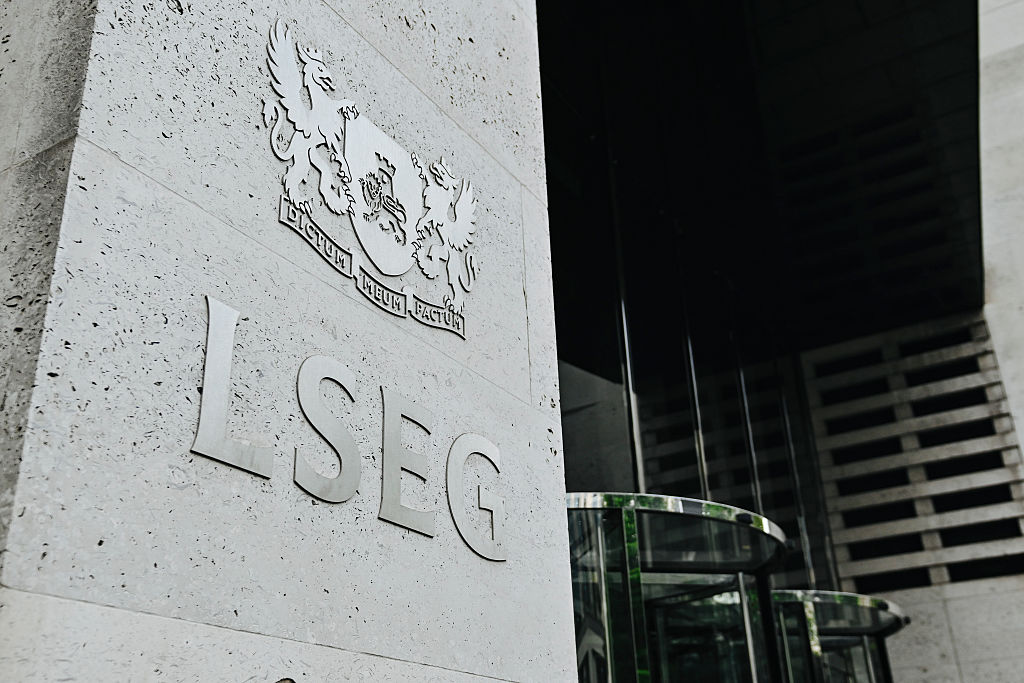Carillion’s lesson for investors: pay attention to short-sellers
Support services group Carillion’s share price collapse has made a lot of short-sellers very happy. Here, John Stepek explains shorting, and what it means for the average investor.


It's not often you see a stock's share price crater by 40% in a single day.
And usually you have to loiter in the shadier streets of Aim, the London Stock Exchange's junior market, to find that kind of action. It's not the sort of thing you expect from the leafier boulevards of the FTSE 250.
So it's no wonder that support services group Carillion drew a great deal of attention with its devastating profit warning yesterday.
MoneyWeek
Subscribe to MoneyWeek today and get your first six magazine issues absolutely FREE

Sign up to Money Morning
Don't miss the latest investment and personal finances news, market analysis, plus money-saving tips with our free twice-daily newsletter
Don't miss the latest investment and personal finances news, market analysis, plus money-saving tips with our free twice-daily newsletter
And it made a lot of short-sellers very happy bunnies indeed...
Why you should pay attention to short-sellers
Once a month, we publish a list of the ten most-shorted stocks in the UK index in MoneyWeek magazine.
Carillion, the construction and support services group, has been on that list for as long as I can remember. Recently, it's been right at the top, with about a quarter of all its shares outstanding being sold short.
For the uninitiated, "shorting" is when an investor (typically a hedge fund) bets on the share price of a company falling. So "shorters" make money when share prices fall, rather than when they rise.
The mechanics of shorting are as follows. You borrow the stock from someone else someone who's "long" the company, such as a pension fund, for example. You pay them to borrow the stock (which is why they're happy to lend it). You then sell the stock.
You have to return the stock in the future. The longer it's on loan, the more it'll cost you. So you have a time limit. Your bet is that the share price will fall, and that you'll be able to buy the stock back at a lower price. You'll then return it to the owner, and pocket the difference between the price you first sold it at, and the price you bought it back at.
In practice, as a small investor, you will only really be able to short a stock using spread betting. But it's worth understanding how the underlying process works, because there are a lot of misconceptions about shorting.
Shorting specific companies is incredibly risky. Firstly, it involves market timing always a challenge, and something that we're all told is impossible. If you go long, you can just "buy and hold". So if you see a "value" investment, you can buy it and sit on it until it comes good.
But going short, by its very nature, involves timing the market. You can't just "sell and hold". Your bet needs to work out, or be abandoned, within a relatively tight timeframe.
Secondly, your losses are theoretically unlimited. If you are long, then your losses are limited to 100% (unless you use leverage, which is a different story) because a share price can't fall below zero. 100% is a painful loss, but it's quantifiable.
But a share price can rise infinitely high. If you're stubborn enough, stupid enough, and wrong enough, you could lose everything on a short bet that goes wrong. Also, if a short starts to go wrong, it can go wrong very quickly.
A heavily-shorted stock (such as Carillion, say), often only needs a little bit of unexpected positive news to send its share price a lot higher. This is known as a "short squeeze".
What happens is that as the share price rises, more and more shorts have to close their positions, sending the price even higher. If you get caught in the rush for the exit, you can lose an awful lot more money than you ever bargained for.
Short-sellers come in for a lot of stick, particularly on bulletin boards (from shareholders who are long), during financial panics (from governments who want to blame someone else), and from chief executives of poorly run companies (who want to misdirect regulators and potential investors).
This is usually entirely unjustified. Because as I hope you can see, the reality is that short-sellers take a great deal more risk than those who are long. And that means they have to make more effort to be right.
There are plenty of "weak longs" in the market people who own stocks largely for no other reason than that everyone else owns them. There are very few, if any, "weak shorts" you need a good reason to be short. As a result, it's usually worth at least understanding the short case before you take a punt on a heavily-shorted stock.
(Shorting entire markets or commodities or currencies rather than specific companies is a somewhat different story there's no more reason to have faith in the shorts than the longs in those markets but that's not what we're talking about here.)
Why you shouldn't see this as a buying opportunity for Carillion
On the specifics of Carillion, let me just be clear. I wouldn't touch it right at this point (it's down another 10% or so as I write, so I'm guessing that's not an outlier opinion, but sometimes the crowd is right).
I'm not saying that it won't one day be a "buy". But right now there's just not enough clarity on what happens next.
The company has written down the value of contracts that have gone wrong by a staggering £845m.It has dumped its chief executive and its dividend, and it looks like there's a good chance that it will need to raise more money through a rights issue.
The interim chief executive Keith Cochrane, formerly of Weir has plenty of experience and he's probably the right man for a tough job. But I'd like to have a better idea of the full extent of the damage before I considered buying in. Although I'll admit I've never been a big fan of the support services sector in any case too much scope for contract slippage and over-optimistic accounting.
As for other heavily-shorted stocks: the other four in the top five at the moment (Carillion is at the top) are online grocer Ocado, grocer Morrisons, oil explorer Tullow, and oil services company Wood Group.
I can't tell you much about those stocks individually right now. And some of this stuff is definitely thematic oil price volatility is clearly an issue for oil companies, and retail also features highly in the "shorts" list right now, with Debenhams, M&S and Pets at Home all in the top ten.
But if you do own any of these stocks, you should be aware that there are a significant number of well-informed people betting against you. Make an effort to understand their case. In fact, if you're holding them, I'd insert a column in your investment journal entitled "Why the shorts are wrong on this stock". Explain why. And if you can't, maybe you need to sell.
Get the latest financial news, insights and expert analysis from our award-winning MoneyWeek team, to help you understand what really matters when it comes to your finances.
John Stepek is a senior reporter at Bloomberg News and a former editor of MoneyWeek magazine. He graduated from Strathclyde University with a degree in psychology in 1996 and has always been fascinated by the gap between the way the market works in theory and the way it works in practice, and by how our deep-rooted instincts work against our best interests as investors.
He started out in journalism by writing articles about the specific business challenges facing family firms. In 2003, he took a job on the finance desk of Teletext, where he spent two years covering the markets and breaking financial news.
His work has been published in Families in Business, Shares magazine, Spear's Magazine, The Sunday Times, and The Spectator among others. He has also appeared as an expert commentator on BBC Radio 4's Today programme, BBC Radio Scotland, Newsnight, Daily Politics and Bloomberg. His first book, on contrarian investing, The Sceptical Investor, was released in March 2019. You can follow John on Twitter at @john_stepek.
-
 Profit from leisure sector as consumers go on spending spree
Profit from leisure sector as consumers go on spending spreeThe UK leisure sector had a straitened few years but now have cash in the bank and are ready to splurge. The sector is best placed to profit
-
 Nationwide: Annual house price growth slows to lowest level in almost two years
Nationwide: Annual house price growth slows to lowest level in almost two yearsThe average house price went up by just 0.6% between December 2024 and December 2025, Nationwide Building Society said
-
 London Stock Exchange gets go-ahead to run Pisces private stock market
London Stock Exchange gets go-ahead to run Pisces private stock marketThe Pisces market will allow investors to buy and sell shares in private companies. But how will it work, when will it launch, and who is allowed to use it?
-
 The ten highest dividend yields on Aim
The ten highest dividend yields on AimTips Rupert Hargreaves picks the highest-paying dividend stocks on Aim, London’s junior market for small and medium-sized growth companies.
-
 The FTSE 100 is doing moderately well – can this continue?
The FTSE 100 is doing moderately well – can this continue?Analysis The FTSE 100 performed well and better than expected in the first quarter of 2022. John Stepek looks at what has changed.
-
MoneyWeek writers’ top investment tips for 2021
Tips Eleven of MoneyWeek’s best writers outline their top tips for 2021, ranging from a Latin American e-commerce giant to a Canadian oil play.
-
 Is Aim finally coming of age?
Is Aim finally coming of age?Features The Aim market of mostly smaller companies has traditionally been seen as a bit of a backwater. Is it time to change that view? Matthew Partridge talks to Paul Latham and Richard Power of fund management company Octopus.
-
Big gains from small caps
Features In an environment of middling inflation and low interest rates, small-cap stocks tend to beat big blue-chips. John Stepek explains why, and how to invest in them.
